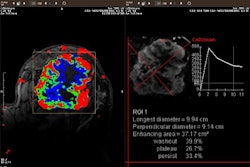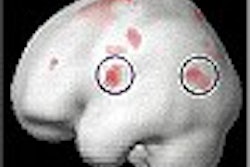American College of Radiology, Philadelphia, 2002
$199 for ACR members; $500 for non-members; $99 for members-in-training
Body MRI is the most recent addition to the Learning File series and is one of three products offered by the ACR that covers the imaging manifestations of pathology by modality. Using the improved interactive template, which debuted with the Chest Learning File, this program discusses the MR presentation and interpretation of disease by anatomic regions.
There are a multitude of radiology software and web-based programs available to the radiologist-in-training or in practice. While the content across products remains relatively fixed, the means of presenting the data and images, and the ease of search and navigation, are quite varied.
This software application, running only on Windows OS, opens with a multi-tabbed table of contents organized by anatomic locations. While billed as Body MRI, it is weighted to the review of musculoskeletal pathology and imaging techniques. Categories include foot and ankle, shoulder and brachial plexus, elbow, wrist, hip and pelvis. These dominate the tabbed categories but disproportionately account for the 344 cases reviewed in all sections. The strength of this program comes from its focus on common musculoskeletal injuries and disease states. The high image quality is similar to the previous Learning File programs although the dissection of each topic has been thinned.
Each musculoskeletal subcategory opens with a helpful review of anatomy and an overview of specific MR techniques, including potential pitfalls and troubleshooting options. However, Body MR lacks a detailed disease overview. In addition, findings are presented with little depth and sparse annotation. Few differential diagnoses are presented and the discussion is often limited to the characteristics of pathology, with little attention to disease etiology or manifestations.
The remaining categories use the same format, with similar strengths and weaknesses. The most noteworthy are the pelvis and breast sections, which review several diseases for which MR is commonly indicated. The chest and retroperitoneum categories cover a limited number of disease states. Only 18 cardiac cases are covered in chest while the retroperitoneum is largely dedicated to less than 10 cases of renal disease.
To its detriment, this edition has shed many of the assets found in other Learning File applications. Another disappointing aspect is the lack of complete abdominal pathology review and the paucity of cardiac MR cases. At 450 megabytes there is ample room for more cases with a more thorough review all-around.
While the format of this first edition of Body MRI Learning File is far superior to any other application, the program does not offer the depth and breadth of this modality, nor does it cover all the topics that are central to body imaging.
By Dr. Daniel ReidmanAuntMinnie.com contributing writer
June 9, 2003
Dr. Reidman is a radiology resident at the Madigan Army Medical Center in Tacoma, WA.
The opinions or assertions contained herein are the private views of the author and are not to be construed as official or as reflecting theviews of the Department of Defense.
If you are interested in reviewing books, let us know at [email protected].
The opinions expressed in this review are those of the author, and do not necessarily reflect the views of AuntMinnie.com.
Copyright © 2003 AuntMinnie.com


.fFmgij6Hin.png?auto=compress%2Cformat&fit=crop&h=100&q=70&w=100)





.fFmgij6Hin.png?auto=compress%2Cformat&fit=crop&h=167&q=70&w=250)











